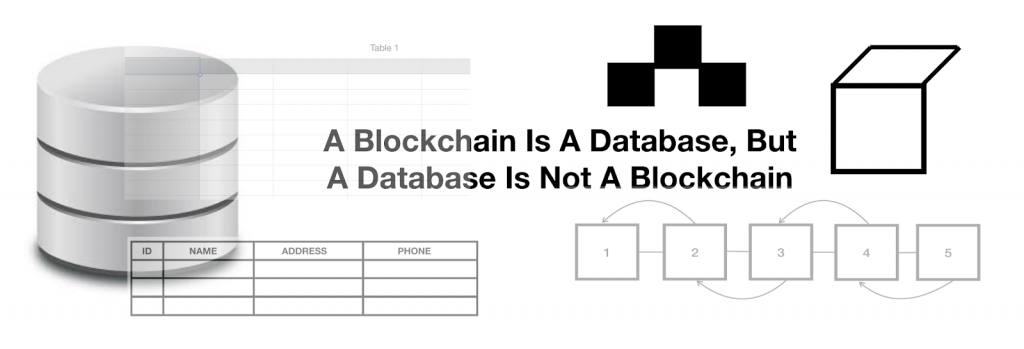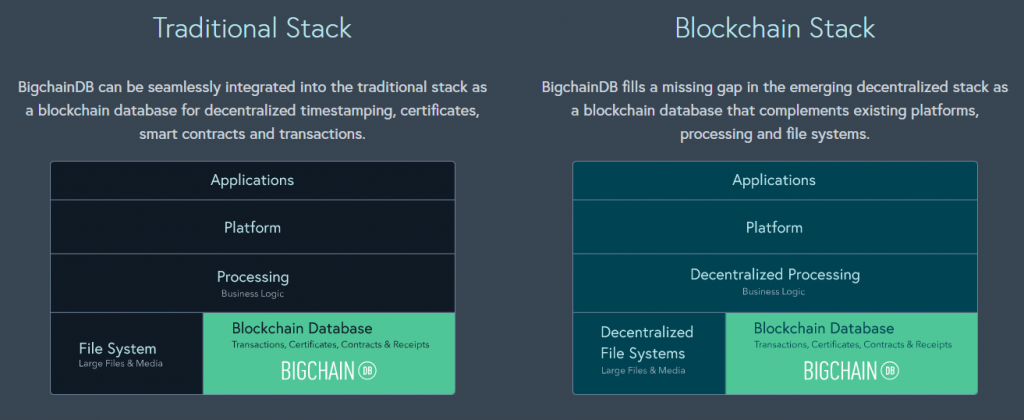
So what is the difference?
You might have already heard terms like, “Blockchain is the future of data storage” or “Blockchain will replace databases”. Blockchain itself is still a fresh technology that is yet to be accepted by big- enterprises. Even though many research and development projects have been done by big enterprises, it is still not market ready. We might wonder why? The simple reason is even though Blockchain-based platforms like Hyperledger and Corda have shown its potential, they have not shown any signs of replacing traditional backends to enterprises yet, or at least to tech giants.
There seems to be a common theme among enterprises today: As exciting blockchain technology is across different industries, they do not see a tangible method of integrating it into their business applications without compromising internal data. There seems to be a challenge when trying to migrate existing data from traditional databases into blockchain-based platforms.
Blockchain, meet the database.
What if we store Blockchain on a database. Is this unreal? No, the only difference is, while traditional databases are centralized, blockchain-based databases are not. Basically, Blockchain is a digital ledger that stores information in data structures called blocks while a traditional database is a data structure that stores information. Blockchain databases can exist with a NoSQL DB.
One of the most popular NoSQL databases is MongoDB. MongoDB uses JSON-like documents with schema to store data objects. One of the promising implementations of this theory is BigChainDB. Rather than trying to enhance blockchain technology, this big data distributed database adds blockchain characteristics like decentralized control, immutability and transfer of digital assets using MongoDB.
As they promise, bigchaindb is complementary to decentralized storage, processing and communication building blocks. It can be used side by side with higher-level decentralized computing platforms and applications, and protocols for identity, financial assets, intellectual property and sidechains. BigchainDB fills a gap in the decentralized stack.

BigchainDB combines an enterprise-grade distributed database (MongoDB) with a production-ready consensus engine (Tendermint) to provide the benefit of both.
Drivers and support
Now to the biggest challenge, how easy it would be to incorporate into our existing grid? Or how difficult it is to set up? BigChainDB is an open-source platform that can be self-hosted on any cloud platform. Before looking at installation options, one must understand the model data is being stored here. They structure their data by assets and metadata. An asset can represent any physical or digital object, while met data consists of additional data to that asset. Basically each insert for a user is a transaction into BigChainDB. To go through its architecture & white paper, click this link.
It provides good support with drivers in all major enterprise stack. You can either use their Test network to start writing your transaction model or setup your own server using this guide. I had a chance to create a sample C# console app on .Net Core 3.1, and setup was fairly easy using a nuget package available for this by Omnibasis. Even though it was a community driver, it has excellent documentation to start with. Official drivers are written in Python, Javascript & Java while community drivers are available with C#, Ruby & Go. It even has HTTP Client-Server API support right out of the box similar to elastic search.
Conclusion
While we are still in the early days of the decentralization movement, solutions like this are truly stepping stones of new & better data storage platforms without changing the medium of interaction with your data. BigChainDB is one of the popular open source platforms, but companies like Amazon are also investing in this idea and have already launched Amazon Quantum Ledger Database (QLDB).
These types of solutions are ready to hit the market very soon where it benefits different industries such as Finance, Manufacturing, Insurance, HR & Payroll and Supply Chain.
Image source and recources used:

 English | EN
English | EN 